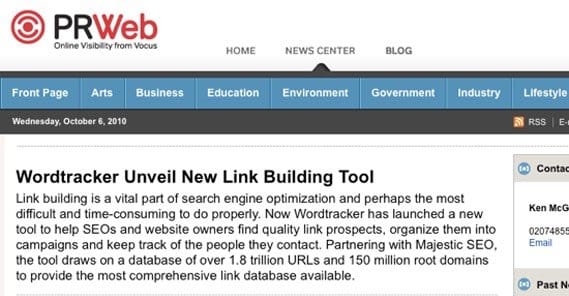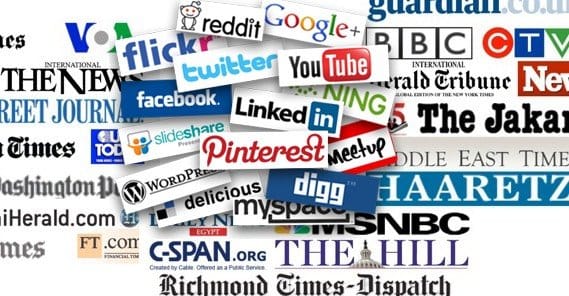The Right and Wrong Way to Publish a Press Release

Press releases used to be one of the best ways to get a link and some brand awareness out there, particularly when you were releasing a new product, program, or service. Then a few things changed, and PR advertising became somewhat more difficult to do. Some people looked on them as guest posts and refused to publish them. Others were worried about publishing content that had been published on other sites. Some marketers stopped using them completely because, as they thought, press releases with links became akin to spam. Send out 1,000 press releases and get them all published, and now you have 1,000 pieces of duplicate content all linking to you; not generally a good thing.
At the same time, the density of people using press releases shot up just prior to the crash. PR marketing grew harder simply because so many people were sending out releases that large sites couldn’t possibly publish them all. Hundreds of people might be competing for a small handful of publication slots.
Unfortunately for everyone who discounted them entirely over the last few years, press releases can be great tools and they are virtually essential for many industries. They’re one of the few acceptable forms of mass communication and they can greatly enhance brand awareness and awareness of your new products. You don’t necessarily need to be sending them out on your own, though; you can have companies like PR Newswire, PRWeb, or Business Wire do it for you. These companies have the reputation and the pull to get your press release syndicated in important places, like Yahoo Finance or Google News.
In a world where one false move with content can get your site demoted in the search rankings, you want to be certain you’re taking the right steps and you’re not shooting yourself in the foot. How, then, can you to press releases properly?
Write a Press Release Properly, or Hire Someone Who Can
Press releases are a very specific form of content on the web. They aren’t just slapdash posts thrown together to announce a product. They tend to fit a specific outline, a sort of free-form fill in the blanks formula that facilitates quick comprehension. If you’re not familiar with writing press releases, it’s very beneficial to hop over to a site like Writer Access or oDesk to hire a writer who is.
The number one requirement of a press release is that it has to cover something newsworthy. If it’s not something that would leave people interested, you can’t write a successful press release about it.
The number two requirement is that you pay attention to the kinds of places you’re sending the press release. You wouldn’t send a press release about a food-for-order service to a tech blogger, and you wouldn’t send a new graphics card announcement to a yoga teacher. It’s all about interest.
The general format for a press release looks something like this:
- Start with the headline. This should be a quick sentence that highlights the main news item.
- Lead with a note about whether it is for immediate release or for release after a certain date or event.
- Create an intro out of a few short sentences that answer as many of the “five Ws” as possible.
- Include information about the source of the information you’re providing.
- Write a deeper section about why people should care about the press release, and what actions they can take to do something about it.
- Include quotes from important figures, like a CEO or lead developer.
- Include any other important details that are up to this point missing.
- End the press release on the word “ends.”
- Include any notes to the editors that would not be published as part of the release, such as where they can find a press kit, get copies of reports, and the information they might need to contact your company.
Above all else, editors love having press releases with all of the relevant information up front. If there’s too much to cram into a single press release, make sure there are links to a press kit and further information, so the editor doesn’t have to go digging. Remember, some of these sites won’t be publishing your press release directly; they’ll be creating their own blog post using the information you provide.
Avoid the common generic phrases that often lead to auto-deletes from editors. Some examples:
- “We’re really excited…”
- “Inside: Interview Opportunity”
- “Subject: Press Release”
- “Don’t miss this!”
- “Fantastic opportunity inside.”
Also, don’t try to go overkill with overselling yourself. The editors and publications you’re reaching read hundreds of press releases every day. You’re not all that special, and trying to make yourself out to be just makes you sound arrogant.
Get the Formatting Right
A good press release will pay attention to keywords, but it won’t go overkill with them. There’s no magic number of keywords in a given space, and in fact short press releases generally have time for no more than 2-3 repetitions total. If you’re shoehorning in keywords where they don’t fit, you’re going to look more like search spam than a marketing piece.
Likewise, when you’re including links in your press release, use specific anchor text. If you’re using the general “click here to read more” anchor, you’re doing yourself no favors. This is partially because sites don’t like generic anchors anymore, and partially because Google actually gives you more credit for good anchors than for generic anchors.
Whenever possible, include images in your text. You don’t necessarily need to go all-out with video, but an image or two can go a long way towards making your press release stand out. You just have to be aware that some companies charge extra for distributing an image along with a press release, so make sure you’re prepared for that.
As for the copy itself, try to avoid writing in the first person perspective. Press releases tend to be in a third person objective view. You should also avoid industry jargon and buzzwords. Many of your readers are going to be relatively new to your industry, so including a bunch of terms they don’t know is going to turn them away.
Target the Right People for Distribution
Depending on whether you’re hiring a company to do the distribution for you or not, you may be able to skip this step. A PR firm will be able to tailor their submissions to your audience, though they may need some information you provide. If you’re doing it yourself, you’re going to need to pay attention to your audience. Who are the types of people paying attention to your company? Who are the people that might have an interest in your new product?
Secondly, where do those people hang out? Pick the top 100 or more sites. You need to make a targeted list, and you can’t do it by targeting mid-range sites that won’t give you might readership. You need to hit the big names as much as possible.
Be Prepared to Edit
When you send out your press release, you’re likely to get it back from a few publications with copious edits attached. These editors refuse to publish anything that isn’t perfect, but they’re not going to take the time to fix what you send them. That’s not their job. They’ll tell you the mistakes they think you made and allow you to fix them and resubmit, but they don’t have the desire to make those changes themselves.
Some other publications will just reject or ignore press releases that they don’t consider publishable. Some won’t publish you regardless, while some will publish you once you fix the post, but aren’t going to make the effort to help you fix it.
Other publications will publish anything that comes their way as long as it’s not obviously spam. By the time you’re getting edits back, you’re getting published in other locations. Here’s the thing; don’t abandon the edits because you’ve been published elsewhere. The pickier publications are the ones that have the best readerships for you to reach.
Use a Good Distribution Service
I mentioned a couple of services above, which are on the mid-range to upper end of PR services. There are other, more exclusive services, and there are services so exclusive you have to be approached by their representatives if you want their assistance.
On the other end of the spectrum, there are PR firms that just have bulk mailing lists they send everything to, regardless of subject. These are the ones you want to avoid, because even though they’re cheap or free, they’re equivalent to spam.
- Business Wire, from Berkshire Hathaway, is a very expensive but very worthwhile service, which can get you in the Wall Street Journal and other high-end publications. Of course, it’ll cost you, around $1 per word for a 400-word limited release, and additional charges for more content, multimedia, and social signals.
- Marketwire is a pretty good alternative with a lower cost, and they have a good dashboard for their web integration and a lot of analytics to help you see how your press release is doing.
- PR Web is potentially expensive as well, but they allow links, media, and other “extras” beyond text for no additional charge.
A distribution service only the first stage of your press release marketing, though.
Second-Stage Syndication
Once you have your press release sent out to the major publications – the Wall Street Journal, the Boston Globe, the Houston Chronicle, and other important news organizations – you have to wait to see who picks it up.
Once you’ve had your press release published by a handful of major organizations, it’s time to start syndicating it. For each social network you use, assign one of the major publications. For example, if you’re published in the three newspapers I listed above, you can then assign each one of them a social network. Link to your Wall Street Journal publication on Facebook, link to the Boston Globe article on Twitter, and link to the Houston Chronicle article on Reddit. The more links you earn, the more social networks you can share through. If you find fewer major sites have picked you up than you would like, figure out why they didn’t publish you and see if you can get other major sites to do it instead.
The idea here is to reach different segments of your audience with different publications. This allows you to even reach some of the same people multiple times, because you’re not copying the same description and publication on each social network.
Don’t Syndicate on Your Website
You should avoid posting the same press release on your website. Google will see that it ahs already been published elsewhere, and they won’t look kindly upon the content duplication. Instead, you need to create your own flow for internal marketing.
What I mean is, generally, something more robust than a press release. You can link to your published press releases from a blog post that goes over everything in greater detail. You can create a landing page with more specific information for customers, designed as part of a sales funnel for preorders or for purchases. No one comes to your site for press releases anyways; they come for deeper, more detailed content. Heck, some of them might be coming from your press release links; you don’t want them to see the same content again.
Building Relationships
Publishing your press release is not the end of the story, either. You’ve gotten a relationship with an editor. You got someone to read and edit and publish your content. This is the foundation for a relationship you can foster, to make the whole process easier next time. Editors love scoops; they are often happy for you to send them tips that aren’t necessarily press releases.
Make sure you learn the preferences of the editors you’re working with, though. Some of them prefer emails, while others would prefer a call to their office before you send a message. Regardless of how you do it, helping out journalists will help you in the long run, as they’ll be more willing to publish the people they know.
 ContentPowered.com
ContentPowered.com







